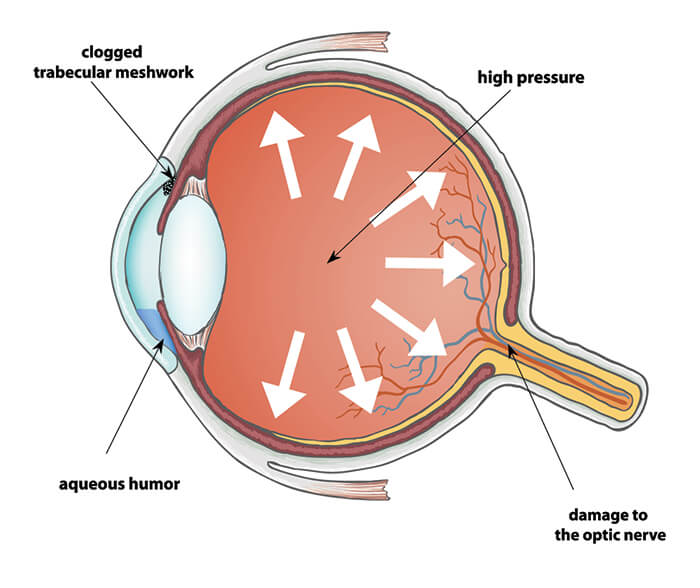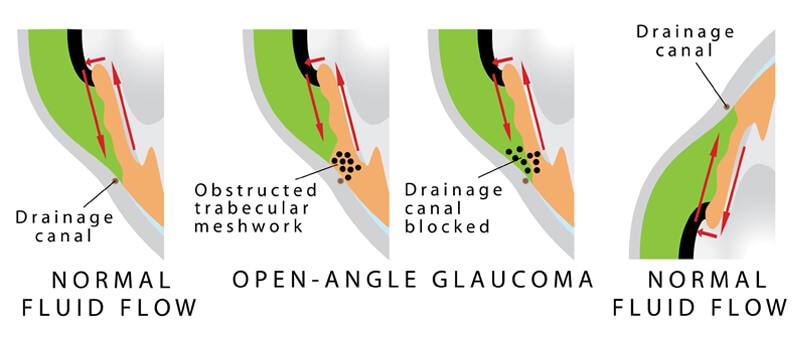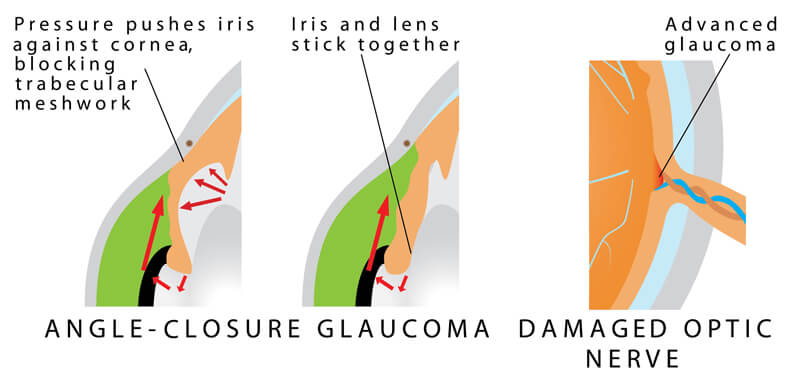Glaucoma
What is Glaucoma?

Glaucoma is an eye disease that damages the optic nerve, the “cable” that connects your eye to your brain. It is usually linked to high eye pressure, though it can occur even with normal pressure.
Over time, glaucoma can cause loss of side (peripheral) vision and, if untreated, may lead to blindness. Most people don’t notice symptoms early in the disease, which is why early detection is critical. Once the diagnosis is confirmed, your doctor will monitor the disease through testing and intraocular pressure readings.
Glaucoma can be managed with eye drops, laser treatments, or surgery to lower eye pressure and protect your vision.
Glaucoma, often called the “sneak thief of sight” because it usually has no symptoms, affects about 3 million Americans and 67 million people worldwide. It is a leading cause of blindness in the United States, particularly among the elderly population.

Example of Vision Affected by Glaucoma
What are the Types of Glaucoma?
Not every type of Glaucoma is the same or will have the same impact on your life. If you have been diagnosed with Glaucoma please make sure to familiarize yourself with the different types of glaucoma listed below. The doctors at Glaucoma-Cataract Consultants are happy to provide additional information regarding your specific type of glaucoma and what this will mean to your life.
1. Chronic open-angle glaucoma:

This is the most common type of glaucoma. The drainage angle, where the fluids in the eye drain, is open, but working less efficiently. The inability to drain causes pressure within the eye to rise, which results in a gradual loss of side-vision. This can be likened to an air filter, which gathers dust over time & eventually becomes too laden with dust to work properly.
Open Angle Glaucoma
2. Angle-closure glaucoma:

This type of glaucoma occurs when the drainage angle is completely blocked, often by the iris. This prevents any fluid to drain from the eye & causes the pressure within the eye to suddenly rise. This extreme rise in pressure causes blurred vision, headaches, severe eye pain as well as the appearance of halos around lights.
Diagram of Closed Angle Glaucoma
3. Chronic angle-closure glaucoma:
This is painless and more gradual closing of the drainage angle, which occurs most frequently in people of African or Asian descent.
4. Secondary Glaucoma:
This type of glaucoma progresses very much like chronic open-angle glaucoma. It occurs when scar tissue blocks the drainage angle. The first symptom is loss of side-vision.
5. Congenital Glaucoma:
This is a birth defect, which affects the drainage angle. To prevent blindness, this condition must be treated shortly after birth. Symptoms include enlarged eyes, a cloudy cornea, light sensitivity and excessive tearing.
